  |
 |
 |
 |
|
ClassicalDesignServices.com
|
 |
|
Professional Affiliations
|
 |
|
|
 |
|

About AIBD
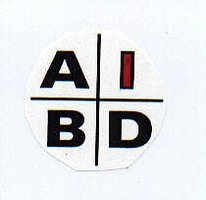
|
| AIBD |
Since 1950, the American Institute of Building Design (AIBD), the nationally recognized association of Professional Building
Designers, has provided its members with professional and educational resources and has developed anationwide design standards
and a code of ethics for the building design profession. Today, AIBD represents professional and associate members in 47 states,
Canada and other foreign countries.
AIBD is meeting the challenge of the future by educating members about new and improved building materials and 21st century
technology that will impact how we live in the future. In response to the ever-changing needs of the design prodession, AIBD
established the National Council of Building Designer Certification (NCBDC), and has charged its leadership with oversight
of the Designer Certification Program. For those who chosen the profession of building design, there is no greater evidence
of competency than achieving the status of Certified Professional Building Designer (CPBD). The certification program, in
place for more than forty years, is the only program of certification for residential and light frame building designers in
the nation. This program is a true test of an applicant's complete understanding of residential and light frame building design.
Certification allows designers to demonstrate professional capabilities and is a designation of professional excellence.
AIBD is affiliated with the Council of Publishing Home Designers, an independent council established to address the concerns
of the pre-drawn home plans market. One of the principal goals of the Council is to ensure the public of the highest quality
product.
In addition, AIBD is active in educating its members through local, regional and national seminars. It has one the most stringent
continuing education requirements of any profession. Conventions are held annually and its Design Competition attracts submissions
from across the nation. Winners are recognized in many prestigious national publications.
Clicking on the AIBD logo above will link you directly to the AIBD website, www.aibd.org.
|
|
|
About ICA
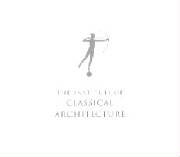
|
| ICA |
The Institute of Classical Architecture was formed in 1992 by a group of classically trained architects who lamented the decline
in classicism in late 20th century architecture. Since the end of World War Two, classicism for the most part has not been
taught in architectural schools and there has been a trend since the early 20th century toward modernism and post-modernism.
The intent of ICA has been to bring about a revival in classicism through education. In 2000, largely through the efforts
of two Florida AIBD members, W.A. "Bud" Lawrence and Bobby Morales, ICA has become closely allied with AIBD and has presented
many educational programs in classical architecture to AIBD members around the country. Its first course, 15 months in length,
was inaugurated in 2001 with more than 100 students attending. It concluded in February of 2003 with 33 graduates.
In 2003, ICA merged with another organization with similar goals, Classical America, and has grown even stronger. In recent
years, local chapters have mushroomed around the country, and a Florida chapter is in its formative stages at this time.
Recently, ICA has also formed an alliance with the Institute of Traditional Architecture, started several years ago in Great
Britain with the aid of Prince Charles. ICA is now teaching courses to AIBD members and others in traditional architecture.
Clicking on the ICA logo above will link you directly to the ICA website: www.classicist.org.
About NTHP

|
| NTHP |
The National Trust for Historic Preservation is a non-profit national organization dedicated to the preservation of historic
artifacts, architectural monuments and other historically significant items.
The Trust is open to membership by anyone who cares about historical preservation. NTHP publishes a monthly magazine "Preservation"
which discusses the issues of endangered historic properties, historic stories and discussions related to historic preservation.
Historic properties for sale are also showcased and advertised in the magazine.
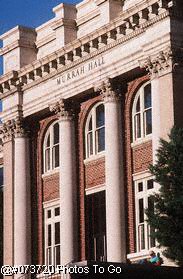
|
| Historic architecture |
About CORA
The inaugural meeting of the Congress of Residential Architecture was held in Los Angeles in December of 2004 in conjunction
with the Reinvention2004 conference sponsored by Hanley-Wood Publishing. Several AIBD members, including myself, were invited
to attend and participate with the others, most of whom were AIA members specializing in residential design.
Founding members, Duo Dickenson of Connecticut, Jeremiah Eck of Boston and Dennis Wedlick of New York were all very receptive
to having other design professionals, especially AIBD members, involved in CORA.
In December, 2005, the second annual meeting was held in Coral Gables, Florida, with more participation and informative seminars.
The next CORA meeting will be held in December, 2006 in San Diego, California.
I am honored to be associated with such a prestigious group of individuals who practice they type of design that I aspire
to.
You can learn more about the mission of CORA by visiting its website: www.corarchitects.org.
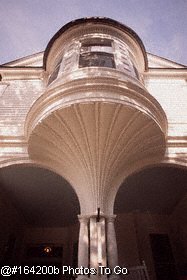
|
 |
|
|
|
 |
|
About NCBDC
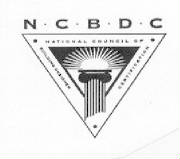
|
| NCBDC |
The design and construction of any building, large or small is not to be taken lightly. This is a serious and expensive proposition.
Who is qualified to design your home? Most states require a registered architect or engineer to design most buildings. However,
most states also provide for exemptions for residential structures and other smaller buldings. For example, in Florida, state
statute provides for architectural exemptions for one-family and two-family (duplex) residences, fee-simple townhouses and
farm buildings. Commercial buildings that do not exceed $25,000 in cost to build are also exempt. (However, how much of a
commercial building can you construct today for less than $25,000?) Therefore, anyone who knows which end of a pencil to hold
or how to use a simple CADD program is legally qualified to design your home. But is this person really qualified? How can
you determine if the person you want to hire has the skill, education and experience to design your dream home?
If you choose a qualified registered architect, licensed in your state, you can be assured that you are hiring a highly skilled
person to design your home. But not all architects are skilled in residential design, and many of them choose not to design
residential buildings. Some do it only as a side line. Their primary focus is on large commercial projects.
Some little known facts gleaned from NAHB statistics:
* Only 4% of all registered architects specialize in residential design.
* 85% of all homes built in the U.S. are designed by people who are NOT registered architects.
* The fact that 4% of all architects can garner 15% of the residential market speaks volumes about the qualifications of those
architects.
There are many people who claim to be designers but are unable to prove their qualifications. They may be draftspeople who
may have had experience working under the tutelage of an architect and have moved out on their own and there are hundreds
of thousands of these people around the country advertising design services. Are they qualified?
Certified Professional Building Designers who are members of AIBD have proven their qualifications as residential design specialists.
The comprehensive exam that each applicant takes tests his or her skills to determine if he or she is qualified to design
homes. After all, safety is a major issue. Just as you would check the qualifications of a builder, a physician or any other
professional, you should check the qualifications of your designer.
You can call the AIBD national office at 800-366-AIBD and request a copy of the informative booklet "A Guide to Residential
Design Specialists". Then, after reading this valuable information, you will be able to make an informed, educated decision.
Less than 3% of all architectural students actually finish their formal training, graduate with a degree in architecture,
finish their required internship, sit for the architectural licensing exam, pass it and actually practice architecture as
a career. So what happens to the 97%?
Many of them change majors, others pursue other post graduate endeavors or leave school to pursue another career. Still others
become construction professionals and may begin a design/build business. Others become interior designers or residential design
specialists.
In order to properly evaluate their qualifications, check carefully in your initial interview to see that their work meets
up to your high standards. Make comparisions, not on price alone, but on quality, experience and the ability to translate
your personal desires and needs into the plans that will satisfy you and your family. Remember, you and your designer should
be able to work together as a team to accomplish the goal of providing you with plans that work for you. It's your home and
you want the best possible product for your design and construction dollar.
Don't be fooled into thinking that the most qualified designers are large firms or small one-person offices. Size and gender
do not matter. Whether you choose a large design firm or an individual practitioner, a man or woman, your decision should
be based on the qualification of AIBD/NCBDC certification, your ease of working with your designer and his/her ability to
provide you with the design and finished plans that you want and that meet the needs of the local building jurisdiction.
Most importantly, try to have fun during the design and construction of your new home and don't be afraid to ask questions.
There are no stupid questions. But there are some poorly designed homes out there. So be careful.
Clicking on the NCBDC logo above will link you directly to the NCBDC website.
|
 |
|
|
|
|
|
